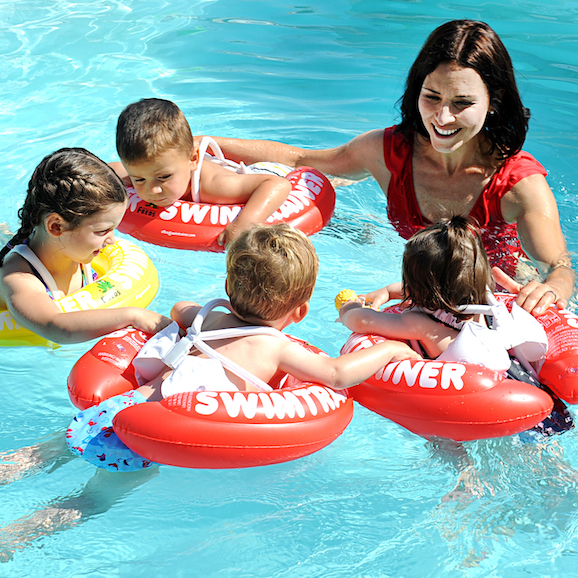Swimming is often touted as one of the most complete forms of exercise. It’s a full-body workout that improves cardiovascular health, builds muscle strength, and enhances flexibility, all while being gentle on the joints.
However, mastering the art of swimming requires more than just plunging into the water and flailing about.
It demands a precise technique, refined over time through practice and guidance. This is where a professional swim trainer becomes invaluable.
In the world of competitive swimming, where milliseconds can make the difference between victory and defeat, technique reigns supreme.
But even for recreational swimmers, improving technique can vastly enhance the swimming experience, making it more efficient, enjoyable, and less prone to injury.
So, what exactly does mastering swim technique entail, and how can a pro swim trainer help you achieve it?
Understanding the Basics: The Importance of Technique
Before diving into the benefits of working with a pro swim trainer, it’s crucial to grasp why technique matters in swimming.
Efficiency: Efficient technique allows swimmers to glide through the water with minimal resistance, conserving energy and improving overall endurance.
Speed: Proper technique maximizes propulsion, enabling swimmers to move faster through the water without expending unnecessary effort.
Injury Prevention: Correct technique reduces the risk of overuse injuries by promoting balanced muscle engagement and proper body alignment.
Confidence: Mastering technique instills confidence in swimmers, empowering them to tackle new challenges and push their boundaries in the water.
The Role of a Pro Swim Trainer
A professional swim trainer brings a wealth of knowledge, experience, and personalized guidance to the table. Here’s how they can help you unlock your swimming potential:
Customized Instruction: A pro swim trainer tailors their approach to your individual needs, taking into account your current skill level, goals, and any specific challenges you may face in the water.
Stroke Analysis: One of the most valuable services offered by a swim trainer is stroke analysis. By closely observing your technique, they can pinpoint areas for improvement and provide targeted feedback to help you refine your strokes.
Corrective Drills: Based on their assessment, a swim trainer will prescribe specific drills designed to address weaknesses and reinforce proper technique. These drills isolate individual components of each stroke, allowing you to focus on mastering one aspect at a time.
Progress Tracking: Working with a swim trainer provides accountability and a structured progression plan. They’ll monitor your progress over time, adjusting their approach as needed to ensure continuous improvement.
Mental Preparation: Swimming is as much a mental game as it is a physical one. A pro swim trainer can help you develop mental toughness, overcome performance anxiety, and stay focused during training and competition.
Mastering the Four Competitive Strokes
Competitive swimming is primarily comprised of four strokes: freestyle, backstroke, breaststroke, and butterfly. Each stroke has its own set of techniques and challenges, and mastering all four requires dedicated practice and expert guidance.
Freestyle: Also known as front crawl, freestyle is the fastest and most commonly used stroke in competitive swimming. It involves alternating arm movements and a flutter kick, with the body positioned horizontally in the water.
Backstroke: As the name suggests, backstroke is swum on the back, with an alternating arm motion and a flutter kick. Maintaining proper body position and rhythm are key to efficient backstroke technique.
Breaststroke: Breaststroke is characterized by a frog-like kick, simultaneous arm movements, and a glide phase between strokes. Timing and coordination are critical for maximizing propulsion while minimizing drag.
Butterfly: Regarded as one of the most demanding strokes, butterfly requires a powerful dolphin kick, simultaneous arm movements, and impeccable timing. It’s notorious for its high energy expenditure and technical complexity.
Overcoming Common Challenges
Even with the guidance of a pro swim trainer, mastering swim technique is not without its challenges. Here are some common hurdles swimmers may encounter along the way:
Breathing: Proper breathing technique can be challenging, especially for beginners. A swim trainer can teach you how to coordinate your breathing with your strokes and develop the lung capacity needed to sustain longer swims.
Body Positioning: Maintaining a streamlined body position is essential for reducing drag and maximizing speed. It requires core strength, body awareness, and a keen sense of balance, all of which can be improved through targeted drills and exercises.
Timing and Coordination: Each stroke has its own rhythm and timing requirements. Achieving optimal coordination between your arms, legs, and breathing can take time and practice, but a swim trainer can provide guidance and feedback to help you master the intricacies of each stroke.
Mental Blocks: Overcoming mental barriers, such as fear of water or performance anxiety, is crucial for progress in swimming. A pro swim trainer can offer support, encouragement, and strategies for building confidence and resilience in the water.
Conclusion
Mastering swim technique is a journey that requires dedication, patience, and expert guidance. Whether you’re a beginner looking to learn the basics or an experienced swimmer striving for peak performance, working with a pro swim trainer can make all the difference.
Their personalized instruction, stroke analysis, and corrective drills will help you refine your technique, improve your efficiency, and unlock your full potential in the water. So dive in, stroke by stroke, and let the journey to mastery begin.
Stay in touch to get more updates & news on Web of Buzz !




